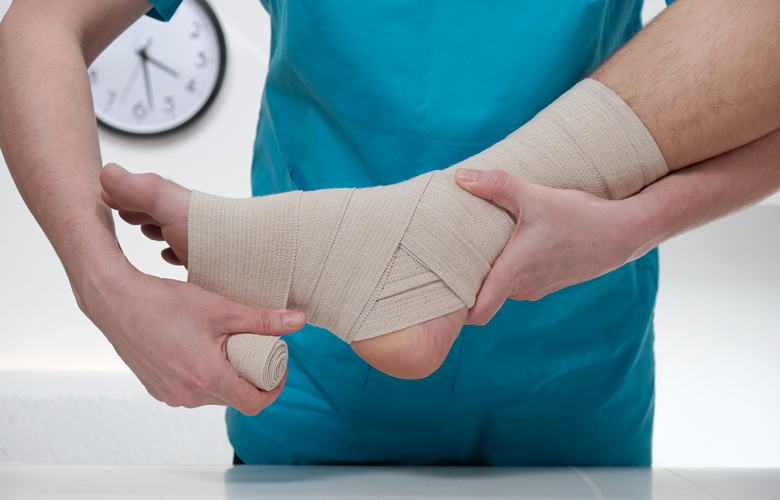
A sprained ankle is essentially damage to the ligaments that tie the bones of the ankle together. The function of these ligaments is to prevent the ankle from turning inwards or outwards excessively. A sprain happens when excessive force is applied to the ligaments, such as when one slips and twists their ankle. The damage is likened to when one pulls on a rubber band too much, and the rubber becomes soft. At times, the force is so much, a rubber band snaps, which is the same concept when one applies too much force on the ankle ligaments, leading to ligament ruptures.
The symptoms of an ankle sprain include pain, bruising and swelling, which is at most times, immediately evident after the slip. The severity of the symptoms varies with how much damage the ligaments sustained. Sometimes, when the ligaments are completely ruptured, the ankle might feel unstable.
Treating ankle sprains follows the popular mnemonic - RICE
- R: Rest - do not put excessive stress on the ankle. One should not be running or jumping on a sprained ankle. Rest encourages healing and prevents further damage to the ligament.
- I: Ice - Apply a cold pack of ice, or a pack of frozen peas on the swelling. This reduces pain and swelling.
- C: Compression - If you have access to a bandage, applying a simple ankle bandage, firmly but not tightly, may alleviate swelling.
- E: Elevation - Elevating your leg on 2 pillows under the heel, or propping your legs up on the coffee table, can help to reduce swelling.
Painkillers and anti-inflammatories can help as well.
Doctors usually look out for signs of fractures with regards to ankle sprains. At times, the force applied to the ankle during a slip is so great, that it transfers to the bones and fractures them. The signs and symptoms are mostly the same as that of a normal ankle sprain, however these few red flags are indicative of fractures rather than sprains.
If you are:
- Unable to bear weight on the affected ankle
- Unable to stand on both legs or walk - even a little - on the affected ankle
- Experiencing tenderness on the bony hard surface of the ankles. There are 2 bony protrusions on the ankle - one on the inside and one on the outside of the ankle. These are the lateral (outside) malleolus, and medial (inside) malleolus. If either of the two surfaces are exquisitely tender on touching them, it might suggest a fracture.
- Experiencing bone pain around the knee as well, or around the feet.
Do consult your friendly neighbourhood doctor or present yourself to the emergency department for an X-ray of the ankle.
One should walk as normally as possible but try to limit long walks to a minimum. The recovery period of a sprain usually takes anywhere from 1-4 weeks, with more severe sprains taking a longer time to heal. Pain and swelling usually subsides eventually, however if you encounter symptoms of instability of the ankle, tendency to get sprains after the initial injury, or chronic pain of the ankle, a referral to a foot and ankle surgeon may be required for further assessment.





